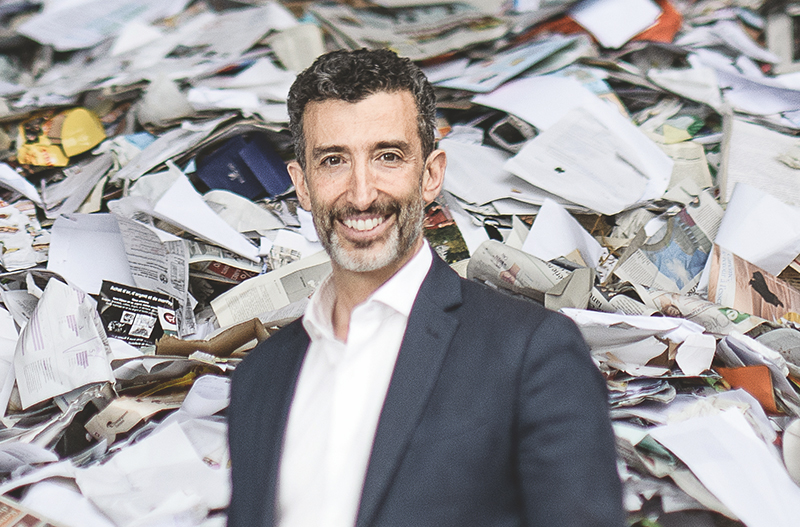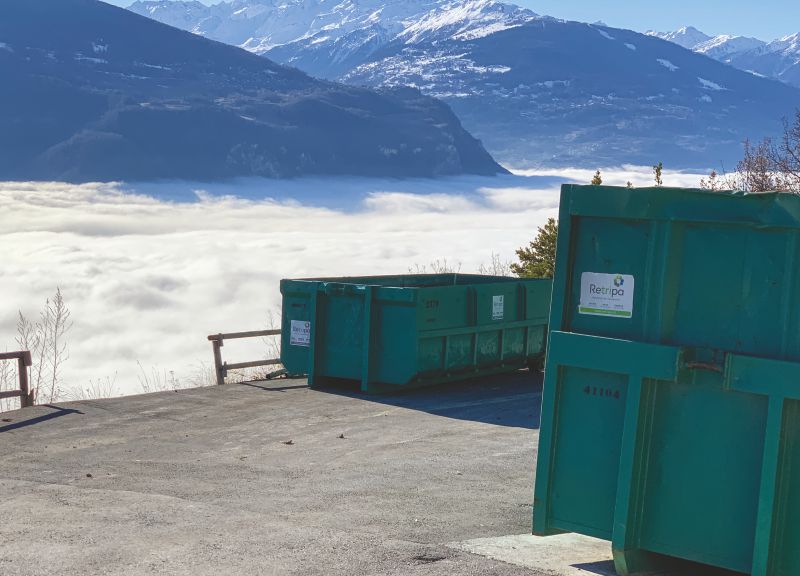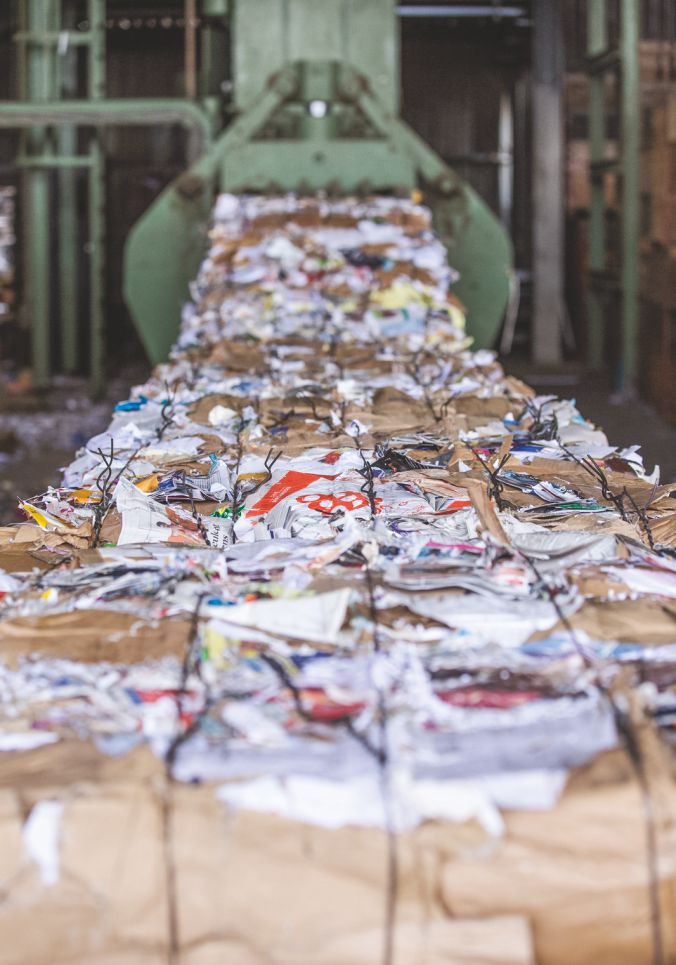Headquartered in Lausanne, Switzerland, Vipa Group was founded in 1965 by Michel Ehrlich. Today, the group is based on two different activities: the collection & sorting of all kinds of waste and the trading of recovered paper, prime paper, stock lots, other recyclable raw materials, and recycling services. With a pre-established market presence in Europe, the United States, India and Southeast Asia, Vipa Group handles more than 3 million tonnes of materials annually. The family-owned company is now managed by CEO Marc Ehrlich, son of Michel, who joined the company in the late 1990s. In an exclusive conversation with Paper Mart, Mr. Marc Ehrlich, CEO, Vipa Group, talks about the principal vision of the group, an overview of the recycled fiber industry, an outlook on the Indian market, and more.

Paper Mart: Please present the core philosophy and vision of Vipa Group. Also, briefly take us through the role of the organization and its contribution to the recycled fiber industry.
Marc Ehrlich: Vipa Group, a family-owned enterprise, was established by my father Michel Ehrlich in 1965. Right from its initial beginnings, the group has been a purpose-driven organization. In view of the collection of paper fiber from waste streams, there should be an outlet and paper mills are considered to be appropriate outlets. However, more often than not, paper mills are in different places than the regions where the fiber is collected because the fiber can be found in highly populated places while the paper production sites are in remote and secluded areas.
Watch: IVAX Paper Chemicals Interview
Recently, India is becoming a production giant for the world. This has given rise to the demand for packaging needs for the products to be exported from India. But the products are actually consumed in the west and hence waste is also generated in the west. Now, there is a double imbalance in this context – firstly, the fact that the recycled fiber needs to reach its destination, for instance, India, and the second aspect is the transport. The containers from Asia to the Western part of the world are usually filled to capacity but most of the containers are unoccupied while coming back. With the rising concerns over CO2 emissions, the containers, if shipped back empty to Asia, would be a total waste of transport and other resources. Hence, filling the containers with recycled fiber is a very good way to address this challenge.
PM: Shed some light on the significant milestones and the key strengths of VIPA.
ME: In the beginning, Vipa Group was solely a trading company, which means we had to find the specific material for the customer along with the best logistic solution as per the requirements. Subsequently, we’ve tried to assess where we could bring additional value to other sectors. For example, since we are based in Switzerland, we discerned that it would be a great idea to start our own collection, sorting, and recycling of paper domestically. In a short span of time, we became the biggest recycling company, especially in the French-speaking part of Switzerland. Since this operational model is practical, we are doing exactly the same in another country where we have a substantial presence, i.e., Greece.
In Greece, we have three recycling facilities and we aspire to expand further because we feel that recycling can be improved in this country, thinking about how to expand to other businesses where we can bring value. A few years back, we started discussing with our customers and we realized that there was a need for them to export their products. Besides, Vipa had the right platform with best logistics, expertise on the products, and culture of international relations.
PM: Give us an overview of the recycled fiber industry with respect to demand, price, trends, various challenges & opportunities globally, and also the perspective for the Indian market.
ME: The fiber recycling market has seen major upheavals in the last three years due to the COVID-19 pandemic which has dramatically changed consumer behaviour. Consumers used to largely depend on physical retail for their shopping needs but the pandemic led to a surge in e-commerce due to pandemic-induced restrictions and lockdowns. The consequence was such that there was an even greater need for packaging while lesser waste was collected since the retail shops and markets are adept in the waste collection but not the households. To sum up, there was a lack of availability of recovered paper while the packaging needs surged exponentially. This led to a distressing scenario where many paper mills lacked raw materials. We’ve seen one of the most dramatic increases in prices of waste paper. The second shock for the industry was the Russian-Ukraine war which led to a global economic turmoil. The perception that recession would hit us while the exact opposite sentiment happened with the same psychological exaggerations. In just a few days, we saw the highest peak in prices to one of the biggest falls we have seen in our history.
Now, we’ve to find a new balance between the collection of recovered paper and the subsequent use of recovered paper by the paper mills. I think this balance will be reached somewhere in Q2 of 2023, when we would better understand the cycle we belong to for the next years. It is important to encourage the masses to make their efforts in recycling at home so that any crisis in the paper industry and the recovered paper segment doesn’t affect the households. We should continue to push to have fiber out of landfill and incineration because many countries have recycling rates close to 5-10 percent when there is a lack of resources, energy, and fiber.
PM: India relatively has a very low rate of recovery of waste paper as compared to other developed nations. Please suggest what could be some relevant strategies to increase the recovery rate in India.
ME: The only strategy that works is education. When the kids go to school, they learn how to recycle at home and persuade their parents to do the same. As long as the general public doesn’t recycle, there is no infrastructure that can be helpful. If you pay the infrastructure to recycle and the population is not recycling at home, then the investment is idle. Thus, to get out of this ‘chicken and the egg’ argument, you need to go step-by-step with pushing education. While this might take one generation more; it is nothing when you think about the future.
In India, there are some good initiatives. A few years back, ITC was developing the ‘Wealth out of Waste (WOW)’ program. Similarly, in Switzerland, many years back, recycling was based solely in schools where the kids were taking the waste paper from their homes to school, and the school was responsible to sell the waste paper. The funds generated while selling the waste paper were paid for the classes and excursions. It is quite heartening when a kid pushes for recycling at home; this becomes the first social step in his/her life as well as the first thing he/she can do for the community. In India, there are big cities as well as small villages; hence, the strategy cannot be the same for every location.

“The global trend is to have large-scale paper machines to reduce costs.”
PM: According to you, what should be the strategy of paper mills to enhance their ‘sustainability’ quotient?
ME: The global trend is to have large-scale paper machines to reduce costs. And everybody is focusing on that. The future depends on ‘sustainability’, which means the paper mill has to build a new machine based on sustainability criteria which include aspects like CO2 emissions and wastewater treatment. All these things will become more important. When a mill plans to augment its paper production capacity, the planning is usually for the next 10-15 years or so. Hence, I opine that the machinery manufacturers and suppliers should be aware of this fundamental approach of the mills. However, when a customer doesn’t regard price as the key consideration, it should be implied that the aspect of sustainability should hold an even more important position in the order.
Also Read: ‘India’s Paper Industry: Towards Global Competitiveness & Sustainability’
PM: Please share your views on the new EU legislation which restricts the export of waste paper.
ME: This is a big concern, with dual impact on the Indian paper mills. One, the EU paper mills would have cheap fiber and they would be able to produce paper in EU and sell that across the globe including India. Secondly, as there would be strong restrictions on export of waste paper from EU then this would be unfair for the Indian paper mills as those mills rely substantially on fiber coming from EU. I am quite surprised to see the Indian paper mills are not reacting to it. I hope these challenges are addressed expeditiously in the near future.
PM: How do you foresee the future of the recycled fiber industry?

ME: Recycled fiber industry has a bright future. Everybody knows that the usage of plastic will be questioned and re-assessed. India took a pioneering step by banning single-use plastic almost three years ago. Further, since the paper usage will increase, we will have to consider an increase in the collection of waste paper. The waste streams have to be improved to cover the increased need and every part of the world including Europe, Africa, and Latin America is brainstorming for the same. This is exactly what will bring good results. I think paper has a fantastic future and the factor that will make the defense is again ‘sustainability’.
“As there would be strong restrictions on export of waste paper from EU then this would be unfair for the Indian paper mills as those mills rely substantially on fiber coming from EU.”
At the moment, we are trading about 3 million tonnes, which makes us the number one independent trading company in the world. This gives us a substantial reach in each and every country in the world where you can find excess fiber or where you need some fiber because there is a deficit at the moment. This global vision creates a huge advantage for us as we have the right information and we can provide the best service to our suppliers and to our customers.



